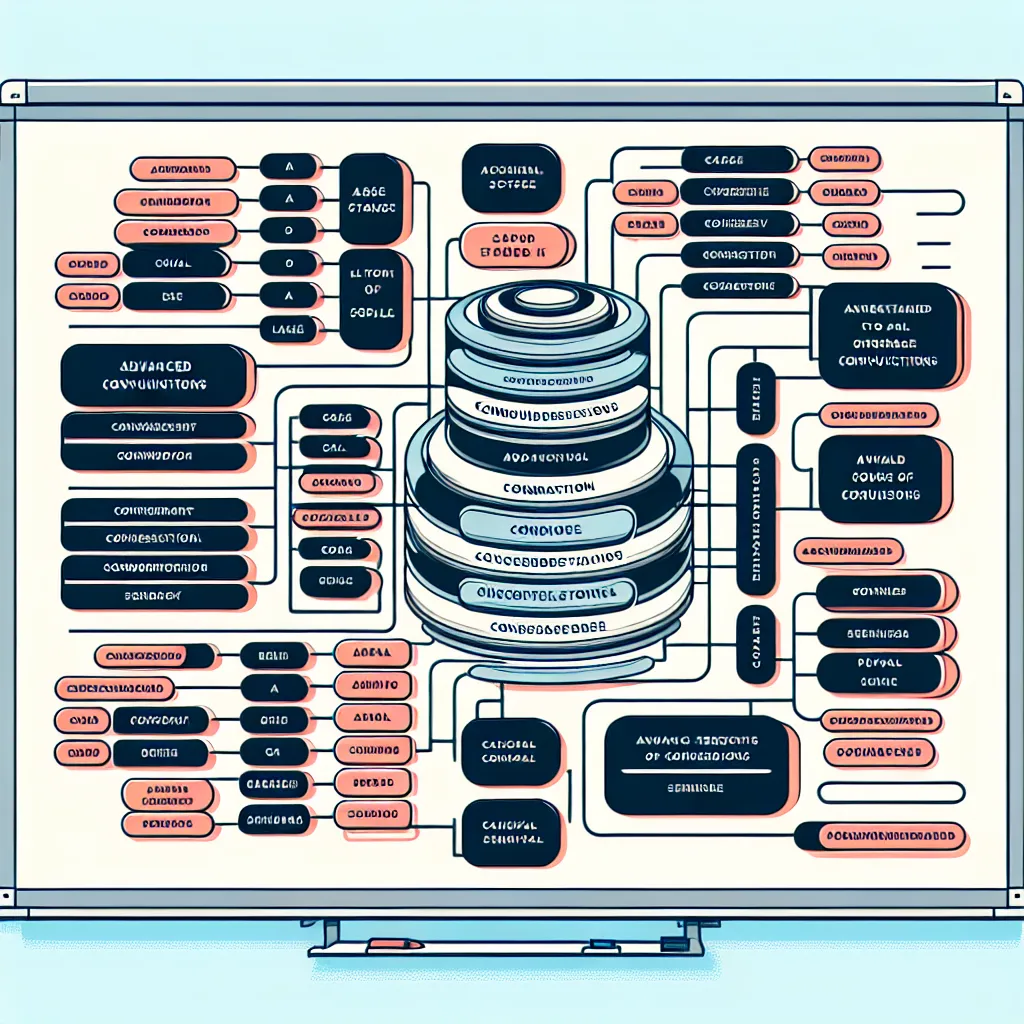Advanced conjunctions are essential tools for crafting sophisticated and nuanced sentences in English. Whether you’re preparing for the IELTS exam or aiming to enhance your academic writing skills, mastering these linguistic connectors can significantly elevate your language proficiency. In this comprehensive guide, we’ll explore the intricacies of advanced conjunctions and provide you with practical strategies to incorporate them effectively into your writing and speaking.
Understanding Advanced Conjunctions
Advanced conjunctions are words or phrases that connect clauses or sentences, expressing complex relationships between ideas. Unlike basic conjunctions such as “and,” “but,” or “or,” advanced conjunctions allow for more precise and varied expression of logical connections, temporal relationships, and causal links.
 Advanced Conjunctions Diagram
Advanced Conjunctions Diagram
Why Advanced Conjunctions Matter
Mastering Advanced Conjunctions is crucial for several reasons:
- Improved clarity: They help convey complex ideas more clearly and concisely.
- Enhanced coherence: Advanced conjunctions create smoother transitions between thoughts.
- Sophisticated expression: They demonstrate a high level of language proficiency.
- Better academic performance: Proper use of these conjunctions is often required in academic writing.
- Higher IELTS scores: Examiners look for varied and appropriate use of conjunctions.
Types of Advanced Conjunctions
Let’s explore some categories of advanced conjunctions along with examples:
Causal Conjunctions
These conjunctions express cause-and-effect relationships:
- As a result of
- Due to the fact that
- Owing to
- In view of
Example: “Owing to the heavy rain, the outdoor event was postponed.”
Concessive Conjunctions
These indicate contrast or unexpected results:
- Although
- Even though
- In spite of
- Notwithstanding
Example: “Notwithstanding the challenges, the team completed the project on time.”
Temporal Conjunctions
These express time relationships:
- As soon as
- The moment that
- Whenever
- No sooner… than
Example: “No sooner had we arrived at the station than the train departed.”
For more information on using advanced syntactic structures, including conjunctions, check out our guide on how to use advanced syntactic structures.
Strategies for Mastering Advanced Conjunctions
-
Contextual learning: Study conjunctions in context by reading advanced texts such as academic papers or literary works.
-
Practice exercises: Complete targeted exercises focusing on specific types of conjunctions.
-
Writing practice: Incorporate advanced conjunctions into your own writing, starting with simpler forms and progressing to more complex ones.
-
Peer review: Exchange writing with a study partner and provide feedback on each other’s use of conjunctions.
-
Corpus analysis: Use linguistic corpora to analyze how native speakers use advanced conjunctions in various contexts.
 Advanced Conjunction Learning Strategies
Advanced Conjunction Learning Strategies
Common Pitfalls and How to Avoid Them
When using advanced conjunctions, be aware of these common mistakes:
-
Overuse: Don’t force conjunctions into every sentence. Use them judiciously for maximum impact.
-
Misuse: Ensure you understand the precise meaning and usage of each conjunction.
-
Redundancy: Avoid using multiple conjunctions that express the same relationship.
-
Improper punctuation: Pay attention to correct punctuation rules when using conjunctions.
For a deeper dive into punctuation rules, visit our article on advanced punctuation rules.
Practical Examples and Analysis
Let’s analyze some examples to see how advanced conjunctions can enhance your writing:
-
Basic: “The experiment failed. The scientists made a mistake.”
Advanced: “The experiment failed due to the fact that the scientists made a critical error in their calculations.”Analysis: The advanced version uses “due to the fact that” to clearly establish the cause-and-effect relationship between the mistake and the experiment’s failure.
-
Basic: “He was tired. He continued working.”
Advanced: “Notwithstanding his fatigue, he persevered with his work.”Analysis: “Notwithstanding” conveys a strong sense of contrast, emphasizing the subject’s determination despite challenging circumstances.
-
Basic: “We finished the project. The client called to complain.”
Advanced: “No sooner had we completed the project than the client called with a list of complaints.”Analysis: “No sooner… than” creates a dramatic temporal relationship, highlighting the immediacy of the client’s response.
For more examples of advanced clauses, including those expressing reason, check out our article on how to use advanced clauses of reason.
Exercises to Reinforce Your Learning
-
Sentence Combining: Take pairs of simple sentences and combine them using appropriate advanced conjunctions.
-
Cloze Tests: Fill in the blanks in sentences with the most suitable advanced conjunctions.
-
Error Correction: Identify and correct misused conjunctions in given passages.
-
Paraphrasing: Rewrite complex sentences using different advanced conjunctions while maintaining the original meaning.
-
Writing Prompts: Compose short paragraphs on given topics, incorporating specific advanced conjunctions.
Conclusion
Mastering advanced conjunctions is a crucial step in developing sophisticated English language skills. By understanding their types, practicing their usage, and avoiding common pitfalls, you can significantly enhance your writing and speaking abilities. Remember that consistent practice and exposure to authentic language use are key to internalizing these advanced linguistic tools.
For those preparing for academic writing, our guide on advanced grammar for research papers offers additional insights that complement the use of advanced conjunctions.
We encourage you to apply these strategies in your language learning journey and to explore the wealth of resources available for further study. Don’t hesitate to share your experiences or ask questions in the comments below. Happy learning!




